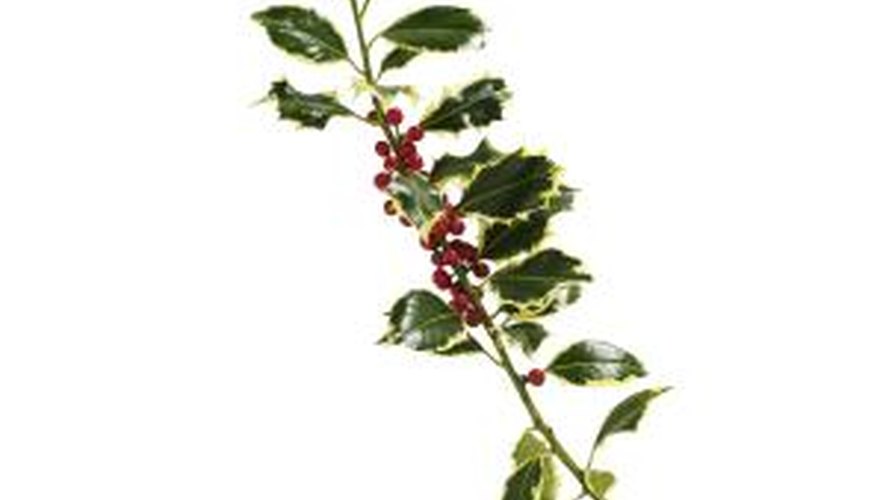Holly berry bushes offer year-round beauty in the home landscape with their attractive foliage and berries. Clipping branches from the shrub after the berries appear and preserving them with drying allows you to enjoy this plant in floral arrangements. Methods that work well for drying holly berry branches include glycerine and air-drying, both offering different results.
Identification
Holly is available in a several varieties, all with the characteristic of shiny evergreen foliage and red berries. Holly bushes remain an attractive focal point in gardens, even during the winter months. The plant is native to North America, and you can find it as a fresh cutting for winter floral arrangements. Homeowners use holly bushes for hedges and foundation plantings.
- Holly is available in a several varieties, all with the characteristic of shiny evergreen foliage and red berries.
- The plant is native to North America, and you can find it as a fresh cutting for winter floral arrangements.
Glycerine
Preserving holly branches with a mixture of glycerine and water creates a cutting that remains flexible for up to two years. Laboratory-grade glycerine is available at most pharmacies, making it simple to purchase the supplies for drying holly. Drying holly branches with glycerine involves crushing the bottom of the stem and placing it in a vase filled with a mixture of glycerine and water. The drying process takes about two weeks from start to finish. This method of drying holly branches works well for use in dried arrangements and wreathes.
- Preserving holly branches with a mixture of glycerine and water creates a cutting that remains flexible for up to two years.
- This method of drying holly branches works well for use in dried arrangements and wreathes.
Air-drying
Air-drying holly is a traditional method for preserving the branches. This natural drying method requires no special supplies, so it is low-cost and simple for all levels of crafters. Drying holly involves clipping the branches from the shrub, tying the bottom stems of several branches together and hanging them from a pole or nail. Place the branches in a warm area with low humidity, preferably a room with no windows to prevent light bleaching. Air-drying is a slow process, taking up to one month depending on the variety.
- Air-drying holly is a traditional method for preserving the branches.
- Air-drying is a slow process, taking up to one month depending on the variety.
Considerations
Choose the method of drying that produces the result needed for your project. Glycerine drying results in a branch that is flexible and lasts for several years in arrangements. The negative results of glycerine are that the leaves and berries lose some colour and may turn brown at the end of drying. Air-drying results in a branch and leaves that are slightly faded but still green. The down side of air-drying is the branches are brittle and the leaves may fall off quickly.
- Choose the method of drying that produces the result needed for your project.
- Glycerine drying results in a branch that is flexible and lasts for several years in arrangements.
